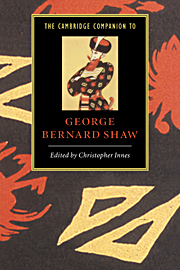3 - New theatres for old
from Part 1 - The social and cultural context
Published online by Cambridge University Press: 28 May 2006
Summary
“Bestial, cynical, disgusting, poisonous, sickly, delirious, indecent, loathsome, fetid, literary carrion, crapulous stuff”: in short, they did not much care for the play.
Nor for its admirers: “Lovers of prurience and dabblers in impropriety” . . . “Ninety-seven percent of the people who go to see Ghosts are nastyminded people who find the discussion of nasty subjects to their taste in exact proportion to their nastiness” . . . “The unwomanly woman, the unsexed females . . . Educated and muck-ferreting dogs . . . Effeminate men and male women . . . Outside a silly clique, there is not the slightest interest in the Scandinavian humbug or all his works” (Works, vol. xix, p. 17).
The target was Henrik Ibsen's Ghosts. The year was 1891, and these snippets from press reports appear in Bernard Shaw's The Quintessence of Ibsenism, published in September. Historic revolutions in industry, society, politics, science, trade, and economics in nineteenth-century England had scarcely been matched by important events in its theatre until this occasion. But now, against all expectations, a Norwegian, a Scotsman, a Dutchman, and an Irishman jolted Victorian conventions, morals, and ideals, jumpstarting a thrust toward modern drama.
- Type
- Chapter
- Information
- The Cambridge Companion to George Bernard Shaw , pp. 55 - 75Publisher: Cambridge University PressPrint publication year: 1998



